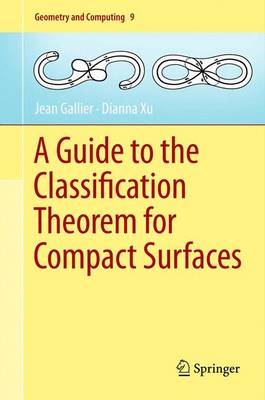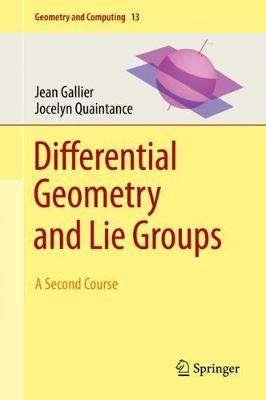Geometry and Computing
2 primary works
Book 9
A Guide to the Classification Theorem for Compact Surfaces
by Jean Gallier and Dianna Xu
Ideal for students whose mastery of algebraic topology may be a work-in-progress, the text introduces key notions such as fundamental groups, homology groups, and the Euler-Poincare characteristic. These prerequisites are the subject of detailed appendices that enable focused, discrete learning where it is required, without interrupting the carefully planned structure of the core exposition. Gently guiding readers through the principles, theory, and applications of the classification theorem, the authors aim to foster genuine confidence in its use and in so doing encourage readers to move on to a deeper exploration of the versatile and valuable techniques available in algebraic topology.
Book 12
Differential Geometry and Lie Groups
by Jean Gallier and Jocelyn Quaintance
This textbook explores advanced topics in differential geometry, chosen for their particular relevance to modern geometry processing. Analytic and algebraic perspectives augment core topics, with the authors taking care to motivate each new concept. Whether working toward theoretical or applied questions, readers will appreciate this accessible exploration of the mathematical concepts behind many modern applications.
Beginning with an in-depth study of tensors and differential forms, the authors go on to explore a selection of topics that showcase these tools. An analytic theme unites the early chapters, which cover distributions, integration on manifolds and Lie groups, spherical harmonics, and operators on Riemannian manifolds. An exploration of bundles follows, from definitions to connections and curvature in vector bundles, culminating in a glimpse of Pontrjagin and Chern classes. The final chapter on Clifford algebras and Clifford groups draws the book to an algebraic conclusion, which can be seen as a generalized viewpoint of the quaternions.
Differential Geometry and Lie Groups: A Second Course captures the mathematical theory needed for advanced study in differential geometry with a view to furthering geometry processing capabilities. Suited to classroom use or independent study, the text will appeal to students and professionals alike. A first course in differential geometry is assumed; the authors' companion volume Differential Geometry and Lie Groups: A Computational Perspective provides the ideal preparation.

